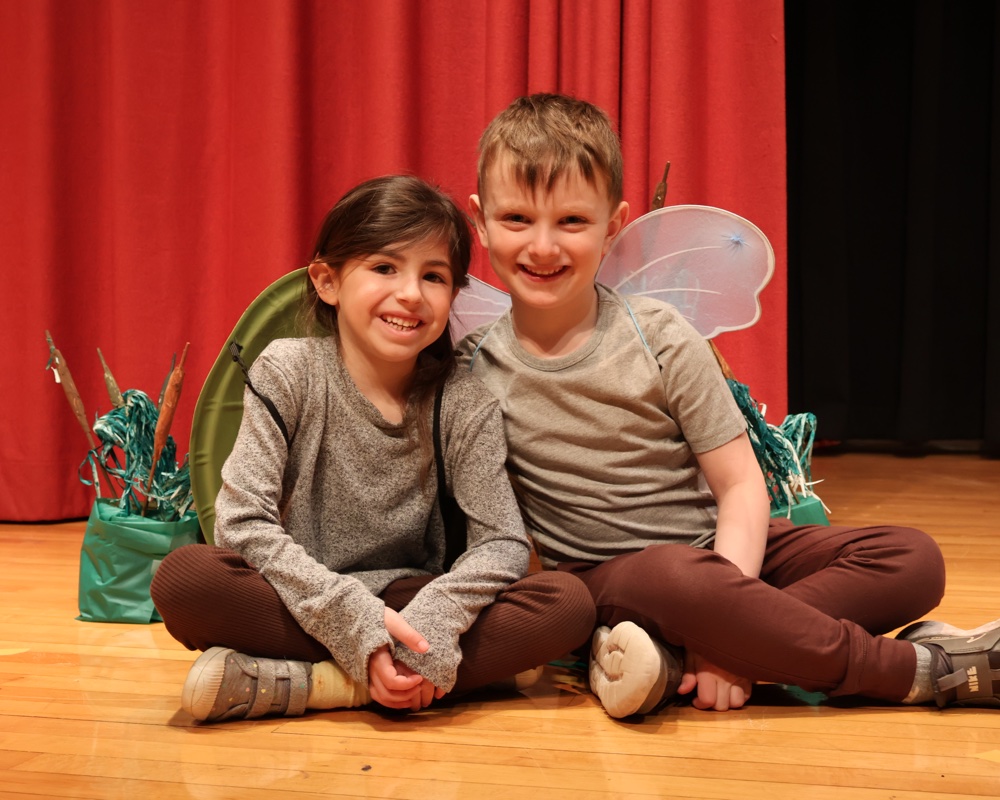Montessori education is based on observation of children and their developmental needs. Discover the science behind the method.
We utilize three year cycles in Primary, Lower Elementary and Upper Elementary because children progress at different rates in different areas. In a mixed-age group children can always find a classmate who is at the same level to work with for different activities. Also, the younger children have role models in the older children, and the older children acquire an additional confidence by being the classroom “elders.” For them, teaching a younger child is an excellent way to consolidate one’s own learning. Equally important, the teachers and children grow into very trusting and familial relationships because they spend three years working and learning together every day.
In a Montessori classroom, children are engaged in “work” as they use the materials made available to them. Maria Montessori viewed play as the work of the child in the construction of his/her personality and learning. This takes place in a developmentally appropriate, prepared environment designed to support the child’s natural love of learning.
There is an environment and expectation of mutual respect, courtesy and kindness among classmates and between teachers and students. Children share the responsibility for the beauty and order found in a Montessori Classroom. Please schedule a visit to observe a Montessori classroom in action. It must be seen to be believed!
Although there is no formal testing of students before middle school, the Montessori method employs effective methods to gauge the children’s progress. Our teachers are trained to be constantly observant and attuned to each child’s progress and difficulties. Extensive notes are taken by the teachers and plans are made to help children out in areas they may be struggling and to provide more opportunities in areas where they may be advancing quickly.
This is often a misunderstood aspect of Montessori. Children are offered a choice of materials, however, all materials are developmentally appropriate and serve a function whether it be developing fine motor skills to strengthen hands for writing, or order-and-orientation as a foundation for pre-reading and introduction to mathematics. Teachers carefully observe students to see what work they have mastered. Teachers introduce and offer lessons on new work when the student is ready and interested to build upon their skills. Montessori teachers are trained to recognize when a child is most ready or motivated to learn a skill based on both their interest and the natural progression of skills. This is referred to in Montessori parlance as the “sensitive period.” “When a child chooses their work they are motivated which is experienced in the brain as a release of dopamine…The motivated brain, literally, operates better and signals faster. When children are motivated, they learn more” (Nurture Shock by Po Bronson & Ashley Merryman, pg. 173).
A student may be in a reading group at their age level but may receive advanced math lesson with older peers. This helps prevent frustration and/or boredom by providing a “just right” curriculum for each and every child. This fosters a love of learning for its own sake rather than for external rewards.
This environment best prepares children for the 21th century world – to be flexible, innovative, self-directed, motivated critical thinkers. The Montessori Method is based on scientific observation that children learn best by doing and a progression from concrete to more abstract.
Guided by an individualized learning plan on the elementary levels and a three week homework planner in middle school, students learn to be responsible for and capable of completing their upcoming work. These tools have real world applications in college, graduate school and in the workforce. A Montessori child is self-motivated and self-directed; he or she does not need to continually ask, “What should I do next?”
For example, a Math lesson may include a history and science lesson showing the connection between seemingly unrelated subjects. Also, History is taught through timelines which the students eventually overlay to discover the political, scientific and artistic movements that were happening simultaneously, thereby giving them a richer understanding of context and the interconnectedness of events.
In the Montessori classroom, children learn by doing which includes trial and error. Students are encouraged to try and fail which helps them to internalize lessons. They also learn not to fear failure. In the traditional model of education children learn primarily through books and lecturing with an emphasis on testing. Being taught abstractly leads to common questions such as “Why do I need to learn algebra? What would I use this for? In a Montessori classroom, students are presented with real world applications for lessons and are encouraged to ask questions until they really understand a concept.
Children are born with a natural curiosity which is often slowly extinguished once external rewards such as grades are introduced. The Montessori Method stresses learning for its own reward which leads to a lifelong love of learning, an invaluable gift to provide your child.

